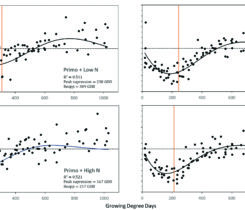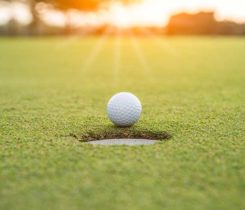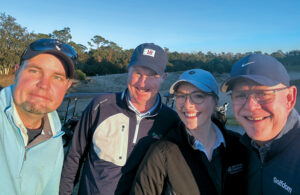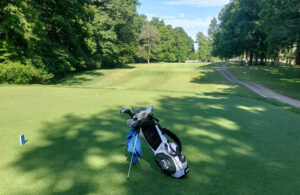The right way to irrigate for healthy and playable fairways
Researchers at the University of Minnesota are evaluating various measurement methods and devices that can quantify the physiological and physical responses of golf course fairways under dry-down conditions. It will determine their practical applicability for superintendents in field settings.
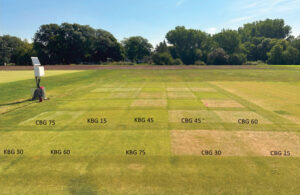
Figure 1. Creeping bentgrass and Kentucky bluegrass fairway turf plots were maintained at different soil moisture thresholds (15, 30, 45, 60 or 75 percent plant available water) on Aug. 3 at the University of Minnesota, St. Paul, Minn. (Photo: University of Minnesota)
The study also seeks to identify the optimal Plant Available Water Limit (PAWL) values that enhance turf health and playability while efficiently managing water usage on creeping bentgrass and Kentucky bluegrass fairways, specifically in cool, humid climates. Additionally, it will explore how the choice of PAWL values impacts the long-term vitality of these turfgrasses and provide insights into sustainable management practices.
Researchers collected a second year of data from Kentucky bluegrass ‘Shamrock’ and creeping bentgrass ‘Penncross’ maintained as individual fairway plots. Before initiation of treatments, plots received 0.5 lbs. of nitrogen and potassium per 1000 sq. ft. (2.4 g N m-2 and 2.4 g K2O m-2) on April 26, 2023.
The study involved irrigation treatments based on five soil water threshold levels of 15, 30, 45, 60 and 75 percent of the Volumetric Water Content (VWC). Researchers applied these treatments in a randomized complete block design across three replications of each cultivar, starting with uniform irrigation of 1 inch (2.5 cm) on June 25, 2023, achieving near-field capacity rootzone conditions.
From June 26 to Sept. 30, 2023, they monitored VWC every 15 minutes using soil moisture sensors, and manually irrigated plots with 0.25 inches (0.65 cm) of water whenever soil moisture fell below their specific threshold (Figure 1).
As expected, plots irrigated at higher moisture thresholds required significantly more water but maintained notably softer and more vibrant green conditions. Interestingly, a moisture threshold of 45 percent managed to achieve similar levels of surface firmness and green canopy cover compared to the 60 and 75 percent treatments without a statistically significant reduction in water usage. Despite this, the 45 percent threshold resulted in a practical water savings of 25 percent compared to the 75 percent threshold.
They also observed varying effects of irrigation thresholds on canopy NDVI (Normalized Difference Vegetation Index), where it significantly declined at the 15 percent threshold, significantly increased at the 45, 60 and 75 percent thresholds, and remained unchanged at the 30 percent threshold.
The interaction between time and irrigation threshold on NDVI changes was significant, indicating that the impact of irrigation on turf health and appearance varies over time and is influenced by the specific water threshold applied.









